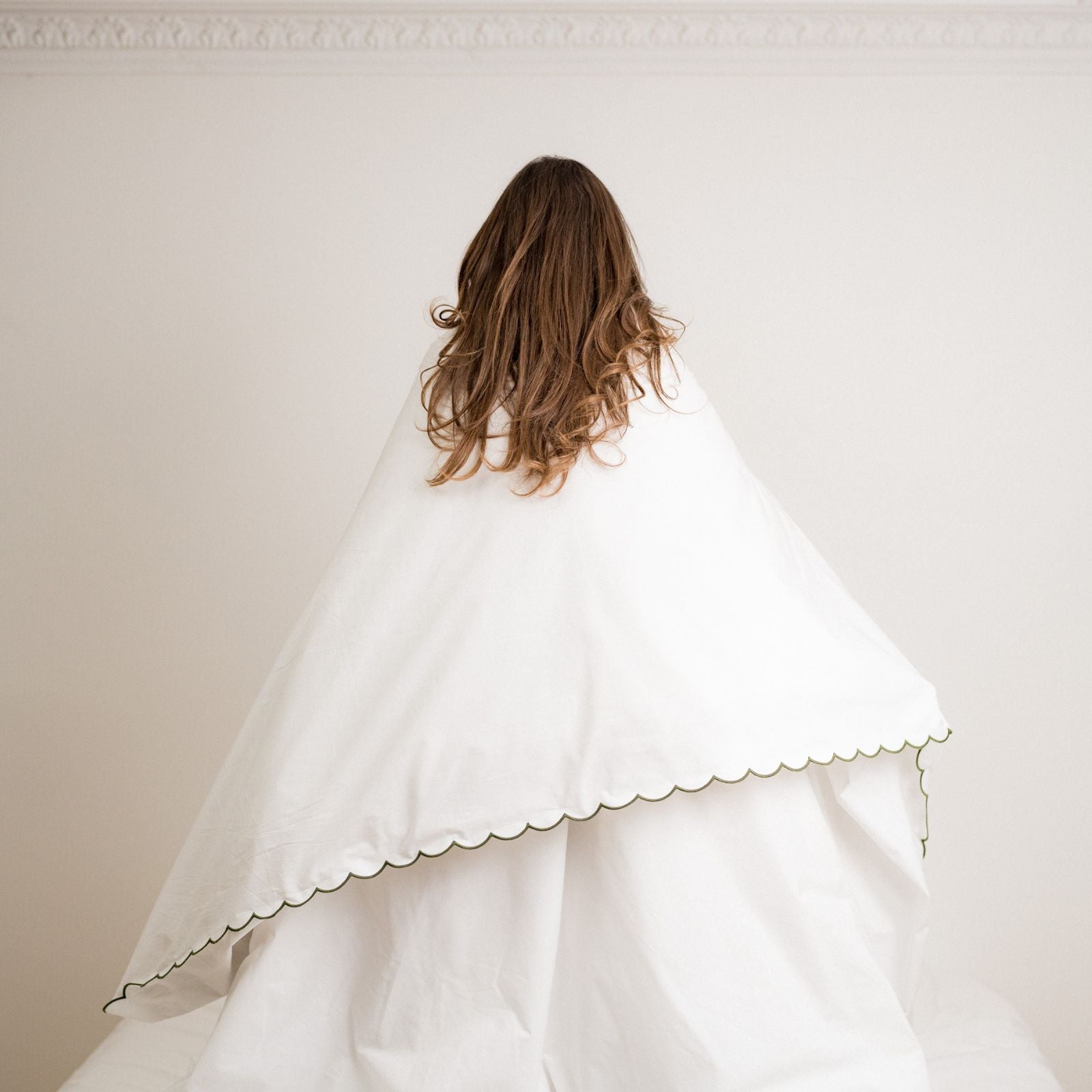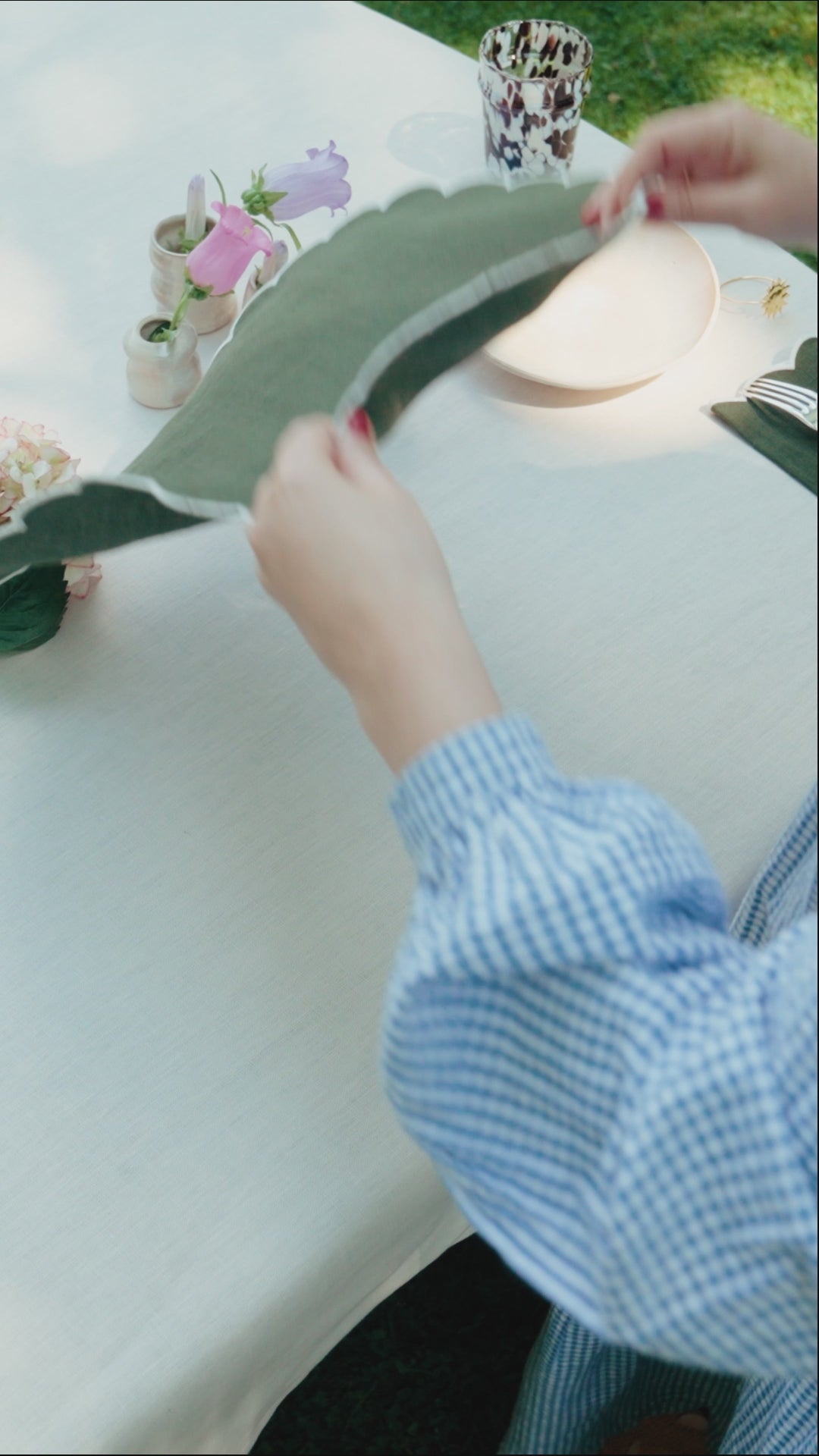Survival guide to learn how to set the table the French way
The essential ingredient for a successful reception is conviviality . But a table set with elegance and attention can also have a small effect!
In this matter, it is completely normal to sometimes feel a little lost among the many utensils available and the advice given by your parents many years ago...
To make your task easier, we have designed this little guide to (re)learn how to set the table in the French tradition.
The rules being made to be broken, it's up to you to apply them as you wish and, if necessary, to twist them to obtain the ideal table, that is to say a table in your image.
Step 1 – choose and install the tablecloth and/or placemats
The first must-have for setting a pretty table is obviously to have beautiful table linen , preferably linen and from the Tomète brand - YES, this article was written in a perfectly objective manner. It will be used to dress your table and protect it.
For special occasions, we recommend ironing your Tomète linen table linen , for a clean and elegant finish. On the other hand, there is no obligation for everyday meals, since crinkled linen has a natural effect which is perfectly appropriate for everyday life.
Our preference is for tablecloths for dinners and placemats for lunch or everyday meals. Cloth napkins are recommended for all your meals.
For even more sophistication or to set a truly unique table, you can even add placemats to your tablecloth , and play with our different colors designed to be easily mixed together.
Step 2 – choose and arrange your plates
Choose your plates according to the style of your table and the menu: large plate (main course), deep plate (soups and soups) and small plate (starter, cheese and desserts). Choose plates that preferably match the table linen.
The deep plate can be placed on the large plate, but the small plate must only be served at the time of tasting.
Step 3 – choose and install cutlery
Basic cutlery , namely the fork, knife and dessert spoon, is essential for all your meals. They may be supplemented with additional cutlery depending on the menu served (tablespoon, fish spoon and knife, etc.).
It is on the subject of cutlery that the French tradition differs most from the Anglo-Saxon traditions.
In France, the tips of the cutlery are turned downwards and the sharp side of the knife is on the inside. In Anglo-Saxon countries, it is often the opposite. There are no official explanations for these differences, but it could result from the tradition of French goldsmiths, who engraved their monogram on the back of the cutlery, unlike the English tradition where it is written inside. cutlery.
The arrangement of cutlery conforms to the logic of their use. The forks are placed on the left of the plate, with the exception of the oyster fork and the snail fork which are placed on the right. Carrying knives and spoons are placed on the right. Finally, the dessert cutlery is placed between the plate and the glasses. They include a cheese knife (right handle), a fruit fork (left handle) and a dessert spoon (right handle).
Step 4 – choose and install the glasses
Choose your glasses, including a water glass and a wine glass (if there is wine) per guest. You can add a flute/glass of champagne and additional wine glasses if you change wines during the meal. Five glasses per guest maximum.
Place the glasses on top of the plate and dessert cutlery, in descending order of size, from left to right.
To add a touch of sophistication or to have fun setting a unique table, you can add fabric coasters under your glasses.
Step 5 – choose and install your towels
Also add linen napkins . Avoid paper napkins which are certainly practical but honestly not very ecological and often not very elegant.
They can be matched with the tablecloth / placemats . You can also be more “fancy”, using different patterns or colors. However, always make sure that they match the general style of your table.
Napkins are usually placed on the left of the plate, although we also like to place them on the right... You can also place them on the plate, wrap them with a Tomète jeweled napkin ring, or create a simple bow. Have fun !
Step 6 – accessorize
The essentials are in place, and you can leave it there.
However, you can add a more sophisticated touch by adding a centerpiece (a beautiful bouquet of flowers for example), unscented candles placed here and there on the table or even a garland of lights or natural leaves.
Our personal touch? Add jewelry napkin rings around the napkins, which will immediately bring an original and chic touch to your table.
Give way to your creativity. The main thing is that the decoration does not interfere with the service and does not prevent guests from chatting among themselves.













